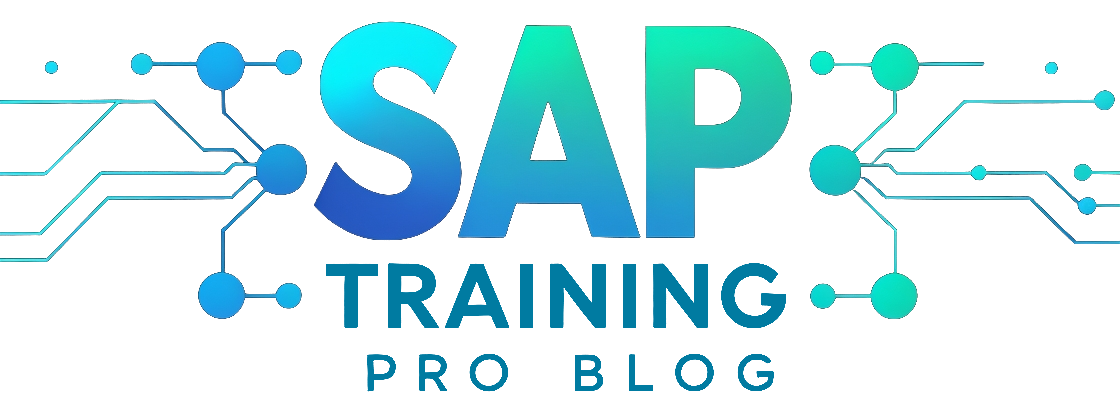SAP BW module: A Deep Dive into SAP BW Module

The SAP BW module is a powerful tool that plays a crucial role in the SAP ecosystem. In this article, we will take a deep dive into the world of SAP BW and explore its various features, benefits, and implementation considerations.
Table Of Content
First and foremost, let’s understand what SAP BW is all about. SAP BW, short for Business Warehouse, is an enterprise data warehousing solution that allows organizations to efficiently store, manage, and analyze their data. It provides a centralized platform for collecting data from various sources and transforming it into meaningful insights.
One of the key features of SAP BW is its robust data modeling capabilities. With SAP BW, users can create InfoObjects, InfoCubes, and DataSources to structure and organize their data. InfoObjects help in defining and categorizing data elements, while InfoCubes serve as multidimensional data structures for efficient storage and analysis.
In addition to data modeling, SAP BW also offers powerful data extraction and transformation capabilities. It enables organizations to extract data from different sources, ensuring data consistency and quality. This allows for seamless integration of data from various systems into the SAP BW environment.
Furthermore, SAP BW provides a wide range of reporting and analysis tools. Users can leverage SAP BW queries to retrieve and analyze data based on specific criteria and calculations. Additionally, SAP BW workbooks enable the creation of interactive reports and complex calculations using data from SAP BW.
In conclusion, the SAP BW module offers a comprehensive set of features and benefits for organizations looking to effectively manage and analyze their data. By leveraging its capabilities, businesses can gain valuable insights and make informed decisions to drive growth and success.
Overview of SAP BW Module
The SAP BW module, also known as SAP Business Warehouse, is a powerful data warehousing solution offered by SAP. It is designed to collect, store, and analyze large volumes of data from various sources within an organization. The module plays a crucial role in providing valuable insights and business intelligence to support decision-making processes.
The main purpose of the SAP BW module is to enable organizations to effectively manage their data assets and transform raw data into meaningful information. It acts as a centralized repository where data from different systems and applications can be consolidated and harmonized. This allows for better data governance and ensures data consistency across the organization.
Within the larger SAP ecosystem, the SAP BW module integrates seamlessly with other SAP modules such as SAP ERP, SAP CRM, and SAP HANA. It serves as a foundation for data analysis and reporting, providing a comprehensive view of the organization’s performance and enabling users to make informed business decisions.
Key Features of SAP BW Module
The SAP BW module offers a range of key features that make it a powerful tool for data management and analysis. Let’s take a closer look at some of its essential features:
- Data Modeling: SAP BW provides robust data modeling capabilities, allowing users to create InfoObjects, InfoCubes, and DataSources. These components help in structuring and organizing data, making it easier to manage and analyze.
- Data Extraction and Transformation: With SAP BW, users can extract data from various sources and transform it to ensure consistency and quality. This feature enables seamless integration of data from different systems, making it ready for analysis.
- Reporting and Analysis: SAP BW offers powerful reporting and analysis capabilities. Users can create queries, workbooks, and dashboards to gain insights from data. These tools provide a user-friendly interface for data exploration and visualization.
Overall, the SAP BW module provides a comprehensive solution for data management, analysis, and reporting. Its features empower organizations to make informed decisions based on accurate and up-to-date information.
Data Modeling in SAP BW
Data modeling is a crucial aspect of the SAP BW module, as it allows users to structure and organize data effectively. With SAP BW, you can create various objects like InfoObjects, InfoCubes, and DataSources to define and categorize data elements.
InfoObjects serve as the building blocks of data modeling in SAP BW. They represent different data elements and can be used to define characteristics, key figures, and time dimensions. By creating InfoObjects, you can ensure data consistency and standardization throughout your SAP BW system.
InfoCubes, on the other hand, are multidimensional data structures that provide efficient data storage and analysis capabilities. They allow you to store data in a structured manner, enabling easy retrieval and reporting. InfoCubes can be used to aggregate and summarize data, making it easier to analyze and gain insights.
DataSources play a crucial role in data modeling as well. They act as interfaces between the source systems and SAP BW, enabling the extraction of data from various sources. DataSources ensure that data is extracted consistently and accurately, maintaining data quality and integrity.
Overall, data modeling in SAP BW is essential for structuring and organizing data in a way that facilitates reporting, analysis, and decision-making. By leveraging the capabilities of InfoObjects, InfoCubes, and DataSources, organizations can effectively manage and utilize their data assets within the SAP BW module.
InfoObjects in SAP BW
InfoObjects are a fundamental component of the SAP BW module, playing a crucial role in defining and categorizing data elements. They serve as the building blocks for data modeling in SAP BW, allowing users to structure and organize data in a meaningful way.
InfoObjects represent different types of data, such as characteristics (descriptive attributes) and key figures (measurable quantities). They provide a semantic layer that adds context and meaning to the data, enabling efficient data analysis and reporting.
With InfoObjects, users can define attributes, hierarchies, and relationships between data elements, creating a comprehensive data model. This model forms the basis for data extraction, transformation, and reporting in SAP BW.
InfoObjects can be classified into various categories, including standard InfoObjects, time-dependent InfoObjects, and navigational attributes. Each category serves a specific purpose and offers unique functionalities to enhance data management and analysis.
By leveraging the power of InfoObjects, organizations can gain a deeper understanding of their data, make informed business decisions, and drive overall performance and success.
InfoCubes in SAP BW
InfoCubes are a crucial component of the SAP BW module, offering a powerful solution for efficient data storage and analysis. These multidimensional data structures provide a structured and organized way to store large volumes of data, allowing for easy retrieval and analysis.
InfoCubes are designed to handle complex data relationships and hierarchies, making them ideal for businesses that deal with vast amounts of data. They enable users to store data in a way that reflects the real-world business scenarios, facilitating accurate reporting and analysis.
With InfoCubes, users can perform various operations such as aggregation, drill-down, and slicing and dicing of data. This flexibility allows for in-depth analysis and helps businesses gain valuable insights into their operations, customers, and market trends.
InfoCubes also support data compression techniques, ensuring efficient storage and retrieval of data. By compressing data, businesses can optimize storage space and enhance system performance.
In summary, InfoCubes in SAP BW are a powerful tool for efficient data storage and analysis. They provide a structured and organized approach to handle large volumes of data, enabling businesses to make informed decisions and gain valuable insights.
Data Extraction and Transformation in SAP BW
Data extraction and transformation are crucial processes in SAP BW that allow organizations to collect data from various sources and convert it into meaningful insights. SAP BW provides a robust framework for extracting structured and unstructured data from internal and external systems, ensuring that the data is consistent and of high quality.
With SAP BW, organizations can integrate data from different systems, such as ERP, CRM, and external databases, into a centralized data warehouse. This enables them to have a unified view of their data and perform comprehensive analysis and reporting.
During the data extraction phase, SAP BW offers various extraction methods, including full, delta, and snapshot extraction. These methods ensure that only the relevant data is extracted and loaded into the data warehouse, minimizing the storage and processing requirements.
Once the data is extracted, SAP BW provides powerful transformation capabilities to cleanse, harmonize, and enhance the data. Organizations can define complex business rules and transformations to standardize and consolidate data from different sources, ensuring data consistency and accuracy.
SAP BW also supports data quality management, allowing organizations to identify and resolve data quality issues. With features like data validation, duplicate detection, and error handling, organizations can ensure that the data in their SAP BW system is reliable and trustworthy.
In conclusion, SAP BW plays a crucial role in the extraction and transformation of data, enabling organizations to leverage their data assets effectively. By ensuring data consistency and quality, SAP BW empowers organizations to make informed decisions and drive business growth.
Reporting and Analysis in SAP BW
Reporting and Analysis in SAP BW is a powerful tool that allows users to gain valuable insights from data. With the use of queries, workbooks, and dashboards, users can explore and analyze data in a structured and meaningful way.
SAP BW queries provide users with the ability to retrieve and analyze data based on specific criteria and calculations. These queries can be customized to meet the unique needs of the organization, allowing users to generate reports that provide valuable insights into business performance and trends.
In addition to queries, SAP BW workbooks enable users to create interactive reports and perform complex calculations using data from SAP BW. Workbooks provide a user-friendly interface that allows for easy manipulation and analysis of data, making it easier for users to uncover patterns and trends.
SAP BW also offers the use of dashboards, which provide a visual representation of data through charts, graphs, and other visualizations. Dashboards allow users to quickly and easily understand complex data sets, making it easier to make informed decisions and identify areas for improvement.
Overall, the reporting and analysis capabilities of SAP BW provide users with the tools they need to gain insights from data and make data-driven decisions. Whether it’s through queries, workbooks, or dashboards, SAP BW empowers users to unlock the full potential of their data.
SAP BW Queries
SAP BW Queries:
SAP BW queries are a powerful tool that allows users to retrieve and analyze data based on specific criteria and calculations. With SAP BW queries, you can create customized reports and gain valuable insights from your data.
Using SAP BW queries, you can define various selection criteria to filter the data you need. These criteria can be based on specific characteristics, key figures, or calculations. By specifying these criteria, you can narrow down your data set and focus on the information that is most relevant to your analysis.
SAP BW queries also offer advanced calculation capabilities. You can perform complex calculations, such as aggregations, averages, percentages, and more, directly within the query. This allows you to derive meaningful metrics and KPIs from your data without the need for additional tools or manual calculations.
Furthermore, SAP BW queries provide various output options, including tables, charts, and graphs. You can choose the format that best suits your needs and present your findings in a visually appealing and easy-to-understand manner.
In summary, SAP BW queries empower users to retrieve and analyze data efficiently and effectively. By leveraging the flexibility and functionality of SAP BW queries, you can unlock valuable insights and make data-driven decisions for your business.
SAP BW Workbooks
SAP BW workbooks are a powerful tool that allows users to create interactive reports and perform complex calculations using data from SAP BW. With the help of workbooks, users can analyze and visualize data in a dynamic and user-friendly manner.
Workbooks in SAP BW provide a flexible and intuitive interface for users to explore data, create charts and graphs, and generate meaningful insights. They offer a wide range of functionalities, including drag-and-drop features, customizable layouts, and interactive elements.
One of the key advantages of using SAP BW workbooks is the ability to perform complex calculations. Users can define formulas, apply filters, and create calculated key figures to derive new insights from the data. This enables them to perform in-depth analysis and make data-driven decisions.
Additionally, SAP BW workbooks support collaboration and sharing of reports. Users can distribute workbooks to other team members, allowing them to view and interact with the reports. This promotes collaboration and facilitates knowledge sharing within the organization.
In conclusion, SAP BW workbooks empower users to explore data, create interactive reports, and perform complex calculations. They provide a user-friendly interface and a wide range of functionalities to enhance data analysis and decision-making processes.
The SAP BW (Business Warehouse) module is a powerful data warehousing solution offered by SAP. It plays a crucial role in managing and analyzing large volumes of data within an organization. As part of the larger SAP ecosystem, the SAP BW module integrates seamlessly with other SAP modules, such as SAP ERP and SAP CRM, to provide a comprehensive business intelligence solution.
With SAP BW, businesses can effectively store, transform, and analyze data from various sources, enabling them to make informed decisions and gain valuable insights. The module offers a range of features and functionalities that support data modeling, extraction, transformation, reporting, and analysis.
By leveraging the capabilities of SAP BW, organizations can streamline their data management processes, improve data quality, and enhance reporting and analysis capabilities. This helps businesses to drive efficiency, optimize operations, and achieve their strategic goals.

